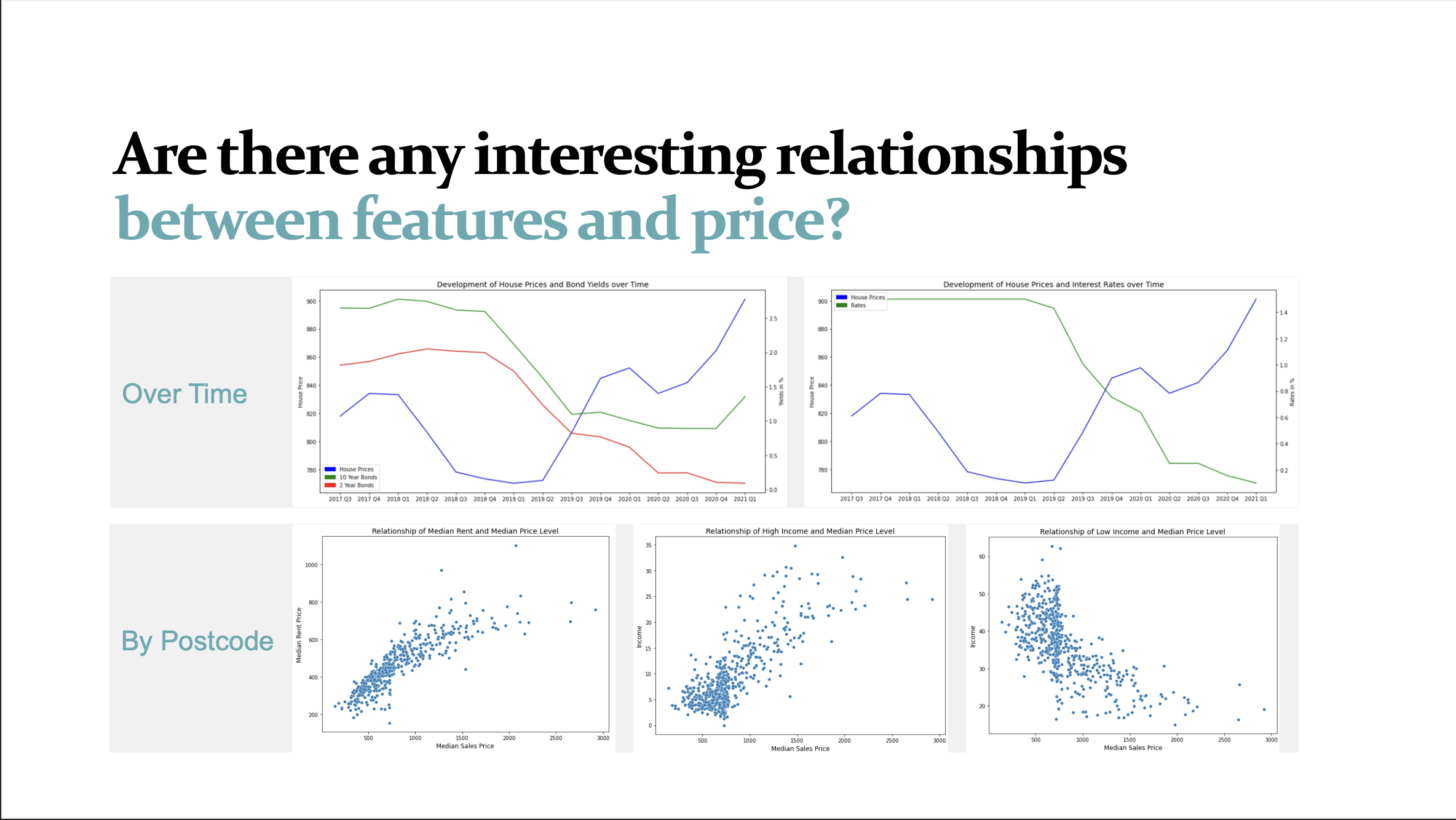| Name |  |
|---|---|
| Felix Rosenberger | Felix's |
| Christopher Rudolph | Christopher's |
| Ken Walther Sy | Ken's |
| Jingran Zhao | Jingran's |
In this project, we have chosen to analyse the property prices in NSW, Australia.
Given the real estate market activity in NSW, we were curious to see how the relationship between housing data, demographics, and certain economic factors interact with one another. Also, we were curious whether we could predict housing data in each postcode with these variables.
We explored questions such as:
- Where should one buy a home?
- Can we predict prices based on socioeconomic data such as income levels, household size, or interest rates?
- Can we predict which postcodes will grow faster than average?
We collected datasets from:
These are cleaned under the Data Preparation Notebooks.
In-depth analysis covered under Main Notebook.ipynb
Apparently, there are several postcodes outside of Sydney that are projected to grow more than 5% in the following quarter.
These are postcodes have the lowest median house prices that are projected to grow more than 5% in the following quarter. This piece of insight can be very valuable especially for first-time home buyers looking into the real estate market.
import pandas as pd
import numpy as np
import matplotlib.pyplot as plt
import matplotlib.patches as mpatches
import seaborn as sns
import os
from sklearn.preprocessing import StandardScaler
from sklearn.linear_model import LinearRegression
from sklearn.ensemble import RandomForestClassifier
from sklearn.neural_network import MLPClassifier
from sklearn.cluster import KMeans
from scipy.cluster.hierarchy import linkage
from scipy.cluster.hierarchy import dendrogram
from scipy.cluster.hierarchy import cut_tree
from sklearn.model_selection import train_test_split, cross_val_score, cross_val_predict
from sklearn.model_selection import GridSearchCV, KFold, StratifiedKFold
from sklearn.feature_selection import RFE
from sklearn.metrics import accuracy_score, r2_score, mean_squared_error, confusion_matrix
import geopandas as gpd
from mpl_toolkits.axes_grid1 import make_axes_locatable
from shapely.geometry import Point, PolygonOther packages are also required to be installed:
pip install geopandas
pip install -U mapclassify
- Main Notebook - This is where the codes for the main part of the analysis and predictive modelling are
- Data Preparation Pt1 (NSW Housing data) - This notebook is where we cleaned all the files for the NSW Housing data
- Data Preparation Pt2 (Feature data) - This notebook is where we cleaned all the features that we used
- Variable Analysis - This is where we deep-dive into the analysis of all the variables





